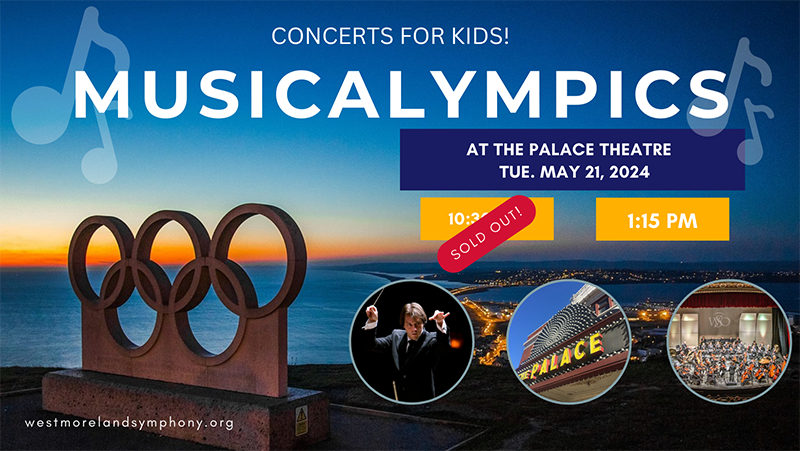Academy String Quartet presents “Dances and Madrigals”
The Westmoreland Symphony presents Academy Concerts: the Academy String Quartet – Jorie Butler-Geyer and Leah Givelber, violins, Warren Davidson, viola, and Cecilia Caughman, cello – in a program to welcome the spring, Dances and Madrigals. The “dances” are by contemporary composer Lera Auerbach, her charming Three Dances in the Old Style for violin and cello. The “madrigals” are Three Madrigals for violin and viola, an exhilarating work by the Czech master Bohuslav Martinu. All four musicians join in a great Haydn quartet (aren’t all Haydn quartets great?) from his Opus 64 set and the brilliant quartet in E flat, Opus 12, written by the 19-year-old Felix Mendelssohn, still in the springtime of his life.
Concerts made possible by Michael J Kakos and Aimee Rusinko Kakos
Donations accepted
Program Notes
Joseph Haydn (1732-1809)
Quartet in G major, Op. 64, #4 (1790)
There is music that will lead you to question the nature of existence, to contemplate the meaning of love and of mortality. This Haydn quartet is not that kind of music, at all: it invites you to celebrate life and friendship. It is full of dancing – mostly of the foot-stomping variety – and some lovely tunes. Note especially the center section of the menuet movement (which, for peculiar historical reasons is called the “trio”), where the first violin is invited by Haydn to exercise their imagination as a soloist, to fool around with speed and volume and keep the rest of the quartet guessing. ~ Warren Davidson
Bohuslav Martinu (1890-1959)
Three Madrigals for violin and viola (1947)
Felix Mendelssohn was born into high society, and his wealthy family provided him with the best tutors and all the cultural riches of the great city of Berlin. Bohuslav Martinu was just born up high: in the top room of a bell tower, where his family lived, where his father had his cobbler’s bench, in a 12’ by 16’ room which housed six people. (They lived in the bell tower rent-free, because his father had side gigs as the bell ringer and fire watchman.) The Martinu family could not provide special training for Bohuslav, but because he showed promise as a violinist, the people of their little town, Poli?ka, gathered money to fund his education at the music conservatory in the capital, Prague.
Arriving in Prague at 16, Martinu did not apply himself to his studies at the conservatory, but he did take full advantage of the musical culture of Prague, attending many concerts, operas, ballets, etc. Though he was expelled from the conservatory for “incorrigible negligence” and failed an examination to become a music teacher, his violin playing was good enough to get him a spot in the Czech Philharmonic.
From 1923 to 1940 Martinu lived in Paris, struggling to make a living between composing and music journalism, aided by his wife’s income as a seamstress. At the Nazi invasion of France, Martinu made his way to the US, where he held significant teaching posts, including at the Mannes College of Music in New York City, at Princeton, and at Tanglewood, the Boston Symphony summer program. While at Tanglewood in 1946, he had a near-fatal fall from a balcony; one of his first compositions during recovery was Three Madrigals for violin and viola.
What did he mean by “madrigals”? The madrigal is a 16th-century form of Italian vocal music, soon taken up in England as well. It is marked by several features: contrapuntal imitation between the voices, frequent changes of musical texture, and moments of relief from the busy interplay of voices when they all sing together in the same rhythm. Martinu was fascinated by English madrigals. In addition to today’s piece, he wrote a Madrigal Sonata for flute and piano and, for a famous amateur violinist named Albert Einstein, Five Madrigal Stanzas for violin and piano. These “madrigals” for violin and viola do not sound like madrigals, really, but they do employ some of the characteristics of madrigal writing.
Three Madrigals was written for a brother-sister team of virtuosos: violinist Joseph Fuchs and violist Lillian Fuchs, who were friends of the composer. ~Warren Davidson
Lera Auerbach (b. 1973)
Three Dances in the Old Style, Op. 54 (2000)
Lera Auerbach was born in 1973 in Russia. Her mother was a piano teacher, and Lera started composing at an early age. Even though she spoke no English she came to America in 1991 to study at Juilliard, where she received degrees in piano performance and composition. Lera also studied comparative literature at Columbia University. Auerbach is not only a pianist, composer, and conductor; she is also a published poet and visual artist. Her poem The Trouble Clef – Konx om Pax is part of the Best American Poetry 2023 Anthology.
The piece we are performing today, Three Dances in the Old Style for violin and violoncello, is a set of short, charming pieces for violin and cello. In these dances you will hear melodies being passed back and forth between the instruments. Some phrases are also played sul ponticello, where the bow is placed very close to the bridge to create an eerie sound. ~Leah Givelber
Felix Mendelssohn (1809-1847)
Quartet in E flat major, Op. 12 (1828)
Like Mozart before him and his contemporary, Chopin, Felix Mendelssohn’s all too brief life was punctuated by love, loss, and creative output of some of the most beautiful music ever written. While he is best known for his ebullient and theatrical symphonies, such as the “Scottish” (No.3), and the “Italian” (No.4), and incidental music for Shakespeare’s “A Midsummer Night’s Dream”, Mendelssohn’s chamber works are no less profoundly dramatic, as exemplified by his first published string quartet, Op.12 in E-flat major. Though the piece itself is barely 25 minutes long, it takes the listener on a musical journey, centered around recitative-like outbursts from the solo violin throughout the movements, which include a tongue-in-cheek Canzonetta, a brooding, introverted Andante espressivo, and a riotous final Molto Allegro e vivace, which is a stunning display of the technical prowess of each member of the quartet, yet ends with the first violin’s solo as heard in earlier movements, now played as a swan song. In this quartet, it becomes very clear that Mendelssohn was deeply influenced by Beethoven’s string quartets (especially his 10th string quartet, nicknamed “Harp”), as the former enfant terrible of Western classical music had passed away only two years prior to the 1829 publication of Mendelssohn’s Op.12. This piece has been performed, recorded, and venerated by string quartets across the globe for nearly two centuries, and we are thrilled to share our interpretation of Mendelssohn’s beloved Op.12 with you today. ~ Jorie Butler-Geyer









